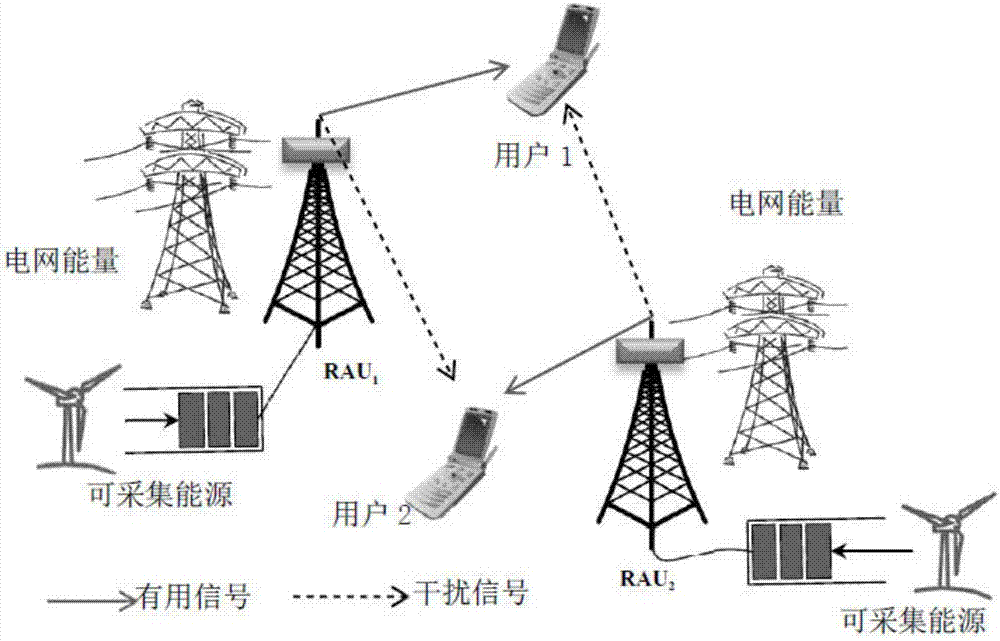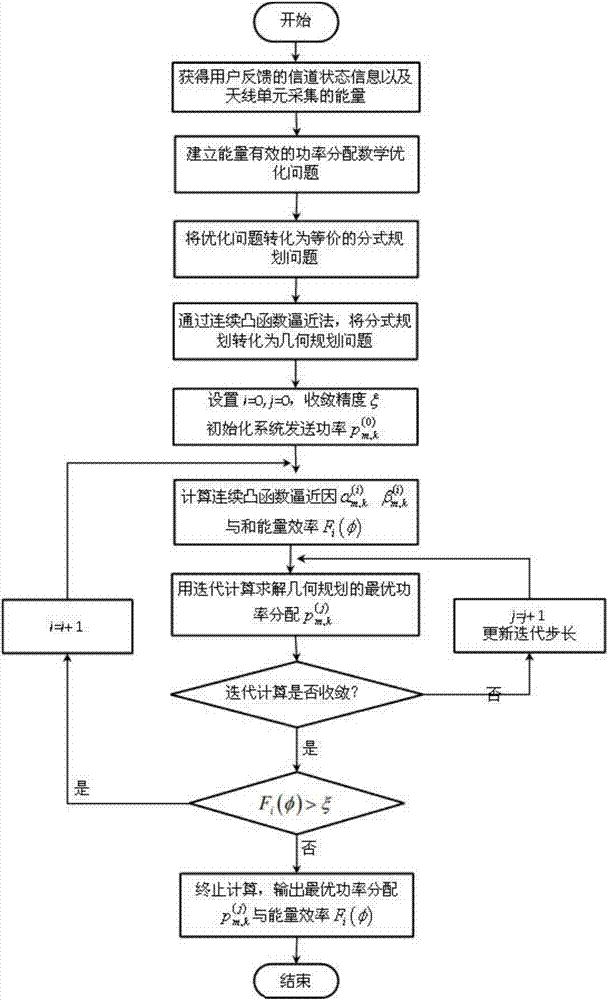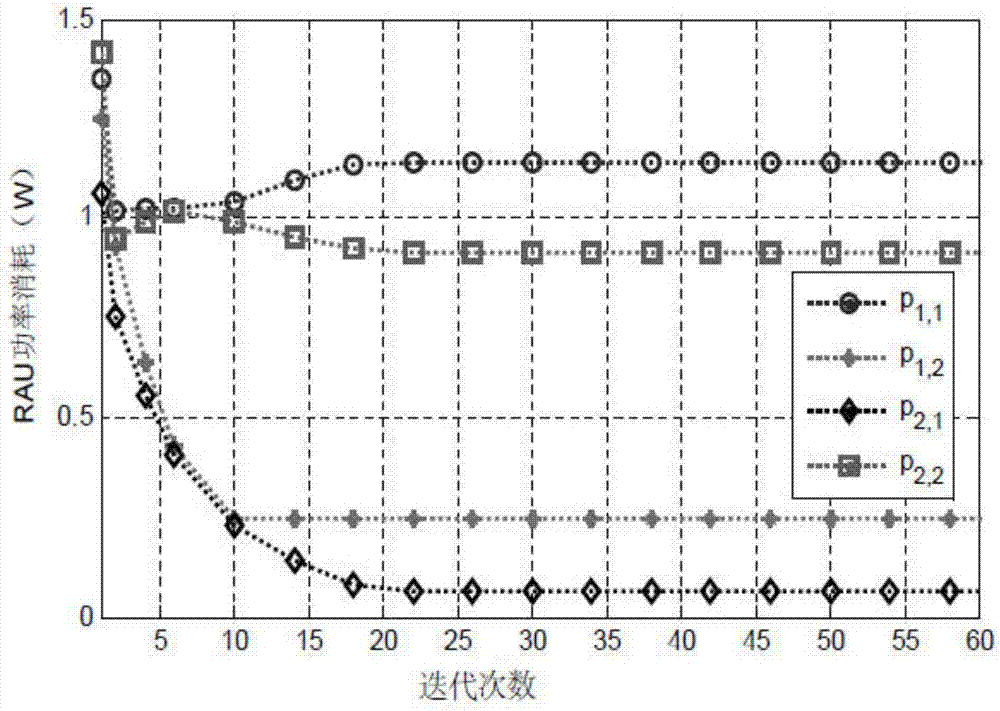Energy-efficient power distribution method aiming at mixed energy supply distributed antenna system
A distributed antenna and hybrid energy technology, applied in radio transmission systems, power management, transmission systems, etc., can solve problems such as less research on collected energy and grid energy, and it is difficult to completely eliminate user interference, so as to improve energy efficiency. Effect
- Summary
- Abstract
- Description
- Claims
- Application Information
AI Technical Summary
Problems solved by technology
Method used
Image
Examples
Embodiment Construction
[0039] The technical solution of the present invention will be further introduced below in conjunction with the accompanying drawings and specific embodiments.
[0040] The single-cell downlink multi-user distributed antenna system for mixed energy supply in this specific embodiment is as follows: figure 1 As shown, there are K users and M RAUs in the cell, figure 1 Where K=M=2. The RAU not only receives power from the grid, but also autonomously collects renewable energy. The system gives priority to using the collected energy to carry data services. When the collected energy is insufficient, the power grid is used to ensure data transmission. It is assumed that both the RAU and the user have a single antenna, and all the RAUs are connected to a central processing unit (Center Unit, CU) through an optical fiber. Assuming that both the sender and the receiver know the channel state information, the RAU sends the data stream x in a cooperative manner k to user k, then the s...
PUM
 Login to View More
Login to View More Abstract
Description
Claims
Application Information
 Login to View More
Login to View More - R&D
- Intellectual Property
- Life Sciences
- Materials
- Tech Scout
- Unparalleled Data Quality
- Higher Quality Content
- 60% Fewer Hallucinations
Browse by: Latest US Patents, China's latest patents, Technical Efficacy Thesaurus, Application Domain, Technology Topic, Popular Technical Reports.
© 2025 PatSnap. All rights reserved.Legal|Privacy policy|Modern Slavery Act Transparency Statement|Sitemap|About US| Contact US: help@patsnap.com



